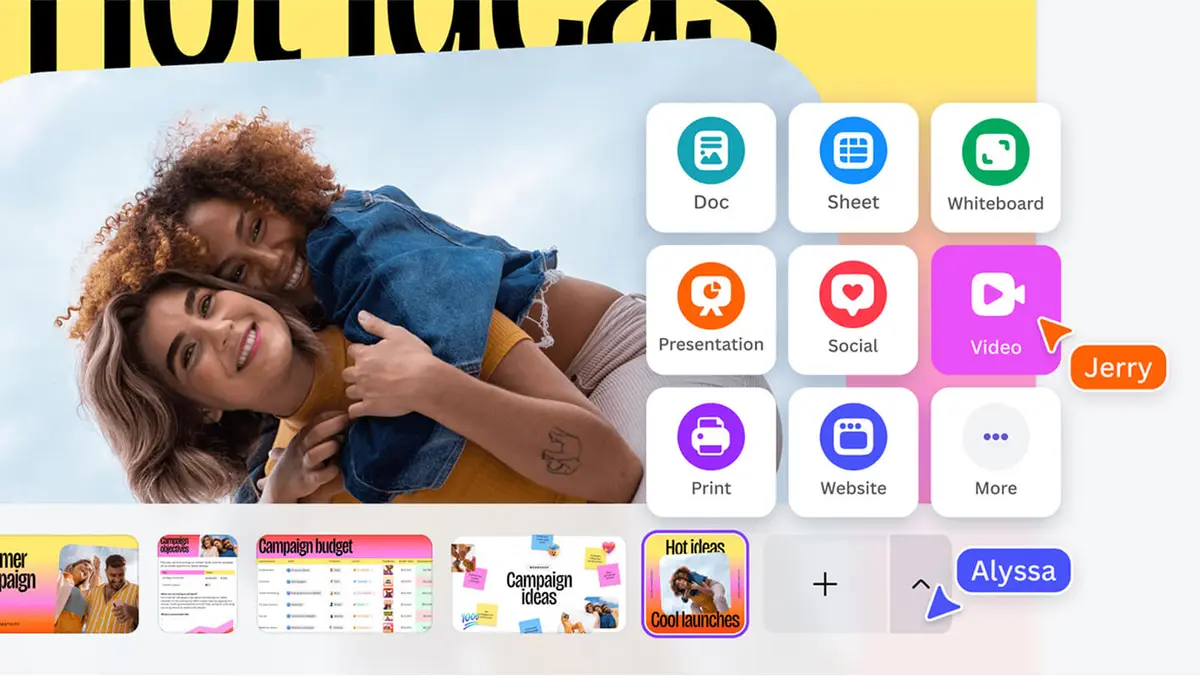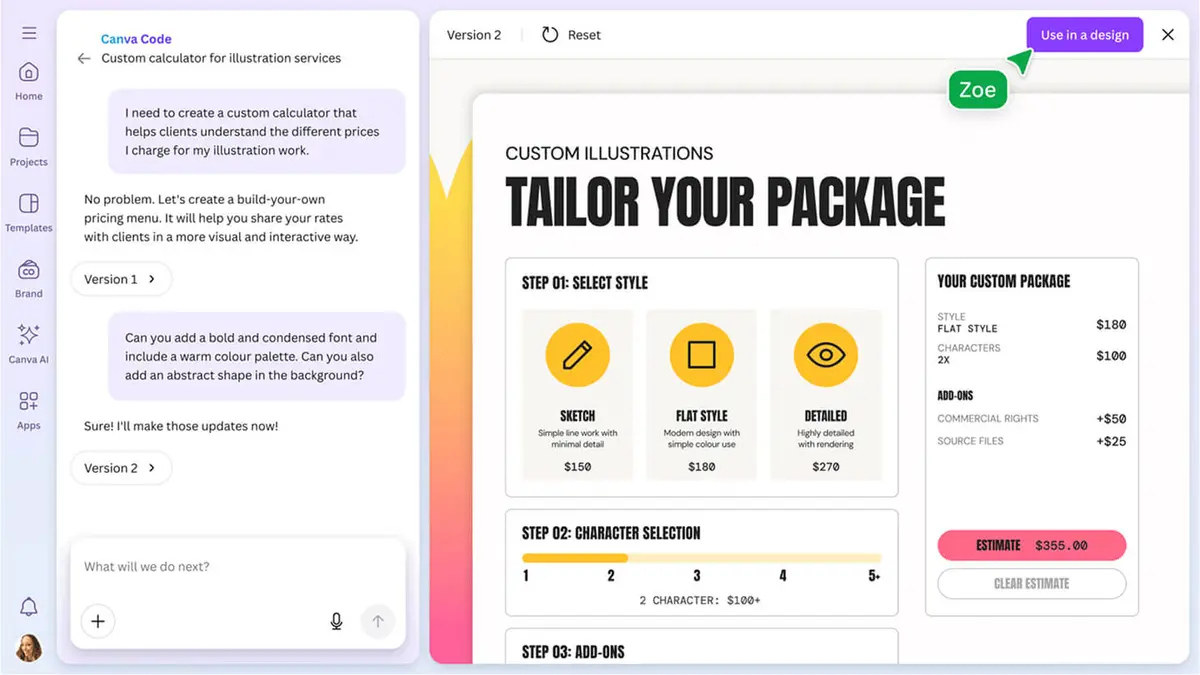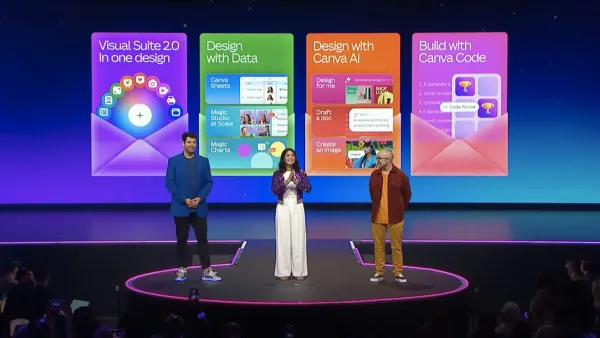At its 2025 product showcase, Canva Create: Uncharted, Canva made one thing clear: AI isn’t just a backend tool anymore. It’s becoming central to how modern software is built and used. Canva’s latest release shows how the application layer is starting to put large language models to work, embedding intelligence into day-to-day workflows and accelerating the idea-to-output process. From spreadsheets that talk back to code that writes itself, Canva unveiled a unified creative environment where anyone, not just technical users, can design, analyze, publish, and even prototype
Canva’s new product suite isn’t just a leap forward for their 230 million monthly users, it’s a leading example of how AI is now being embedded directly into the application layer—and increasingly, it's clear that AI will sit at the center of how these applications are designed, built, and experienced. Rather than functioning as a feature or plugin, AI is becoming the core logic that drives the next generation of software. This is the evolution we’ve long anticipated in our AI thesis: a transition from foundational models to real-world, mass-market use cases. And with Canva’s tools already in use by Fortune 500 brands like Disney, Deloitte, and FedEx, the implications for enterprise adoption are significant.
Canva’s AI-powered platform strategy comes into focus
If the last decade of software was about bringing tools to the cloud, the next will be about bringing intelligence to the user. Canva’s 2025 product announcements show that it’s well ahead of that curve.
1. Visual Suite 2.0: Consolidating multiple design tasks into one place
At the heart of the event was the launch of Visual Suite 2.0, Canva’s answer to the fragmentation of modern workflows. Whether you’re sketching ideas on a whiteboard, writing a brief, building a presentation, or launching a website—now it can all happen within a single design file. No more file handoffs. No more context-switching.
This isn’t just a user experience win; it’s a structural moat. The more work that happens in one place, the more data Canva captures, the more personalized its AI becomes, and the more deeply embedded it becomes in its users’ daily routines.

2. Canva Sheets: Not your parents’ spreadsheet
Canva’s most surprising reveal may also be its most strategic: Canva Sheets. It’s a spreadsheet, only visual, AI-native, and frictionless. With built-in tools like Magic Formulas, Magic Insights, and native charting, Sheets functions as a real-time data layer across the entire platform. Need 500 personalized assets for a regional campaign? Just plug in your dataset and click.
For a company already beloved for design, Sheets unlocks Canva’s entry into a much larger productivity market. And it’s this kind of tool, deeply integrated, endlessly flexible that turns Canva from “just design software” into a full-stack enterprise platform.
3. Magic Studio & Magic Write: AI at scale
With Magic Studio, Canva has taken the guesswork out of scaling content. Create one design, and let AI turn it into many translated, localized, resized, and ready to post. A marketer’s dream, and a clear threat to legacy creative workflows.
The real unlock, however, comes when Magic Studio is paired with Sheets. Now, marketers can automate entire campaign rollouts, from copy generation to multi-language design in minutes.
4. Canva Code: Designing interactive experiences with prompts
One of the most forward-looking launches was Canva Code, which lets users build interactive content like calculators, forms, or widgets using nothing but a prompt. What makes this notable is that it turns Canva from a static design tool into a platform for building dynamic, software-like experiences.
By partnering with Anthropic, Canva is taking a clear stance: creativity and computation are converging. While it’s not aiming to replace developers, it is aiming to democratize the ability to build interactive products—bringing more people into the fold of digital creation.

5. Canva AI: A natural language interface for the creative stack
Finally, Canva’s AI assistant is now front-and-center. From the homepage, users can start their work with a voice or text prompt—whether it’s “create a sales pitch deck for Q3” or “turn this spreadsheet into a chart.” In other words, Canva is becoming conversational.
That’s no small feat. It’s one thing to bolt AI onto a feature; it’s another to reimagine the UI around it. This is precisely the kind of product-led, interface-level disruption that can separate winners from hype cycles.
Zooming Out: The application layer is here
For investors focused on the evolution of AI, Canva’s latest updates serve as validation of a key trend: real differentiation is happening at the application layer, where foundational models meet real-world users. Canva’s scale (1 billion designs/month, 230M MAUs), enterprise penetration (2,000+ contracts), and velocity of feature rollouts position it as one of the most compelling examples of applied AI in the market today.
We see Canva’s trajectory as part of a broader shift toward long-term platforms with high surface area for value capture—those that embed AI deeply into user workflows and create new categories of productivity across both creative and operational use cases.
Canva may have started as a design tool. But it's increasingly clear it's building something much bigger, an operating system for the creative and knowledge economy.
*The fund’s full portfolio holdings are available here.

